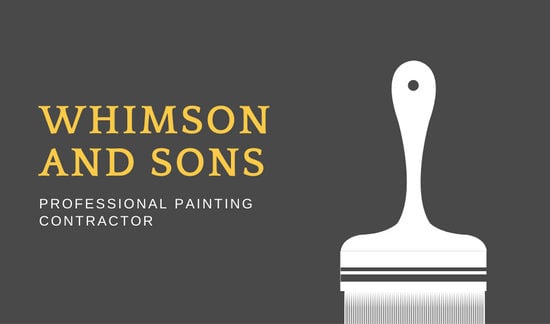Understand How Seasonal Conditions Affect The Success Of Business Outside Painting And Find Out The Suitable Durations To Guarantee Resilient Outcomes For Your Project
Understand How Seasonal Conditions Affect The Success Of Business Outside Painting And Find Out The Suitable Durations To Guarantee Resilient Outcomes For Your Project
Blog Article
Post Produced By-McLamb Rodriquez
When you're preparing a business external paint job, seasonal elements can make or damage your results. You'll want to take into consideration how temperature level and moisture influence paint application and drying out times. Selecting the best season can guarantee your paint sticks properly and lasts longer. However which seasons are absolutely the most effective for this kind of work? Allow's discover the crucial elements that can influence your project's success.
The Effect of Temperature on Paint Application
When you're intending an industrial outside painting project, the temperature level can significantly impact how well the paint sticks and dries.
Preferably, you intend to repaint when temperature levels vary between 50 ° F and 85 ° F. If it's as well cold, the paint may not treat effectively, bring about problems like peeling or fracturing.
On the flip side, if it's too hot, the paint can dry out as well rapidly, avoiding appropriate bond and causing an unequal surface.
You must additionally think about the time of day; early morning or late afternoon provides cooler temperatures, which can be much more positive.
Constantly check the producer's referrals for the specific paint you're using, as they commonly give support on the ideal temperature level range for ideal results.
Humidity and Its Result on Drying Times
Temperature level isn't the only ecological variable that influences your business outside paint project; humidity plays a significant role also. High humidity levels can reduce drying times considerably, impacting the total quality of your paint job.
When the air is saturated with dampness, the paint takes longer to cure, which can cause concerns like bad bond and a greater risk of mildew growth. If you're repainting on a specifically damp day, be planned for extensive delay times in between coats.
It's critical to check regional weather and plan as necessary. Preferably, go here for moisture levels between 40% and 70% for optimal drying out.
Maintaining these consider mind ensures your project remains on track and provides a long lasting coating.
Best Seasons for Commercial Exterior Painting Projects
What's the very best season for your industrial exterior painting projects?
Spring and very early fall are typically your best options. Throughout these seasons, temperature levels are moderate, and humidity degrees are frequently reduced, developing perfect conditions for paint application and drying out.
questions to ask exterior house painters , which can trigger paint to completely dry also swiftly, leading to bad bond and finish. Likewise, winter months's chilly temperature levels can prevent proper drying out and curing, running the risk of the long life of your paint task.
Go for days with temperature levels between 50 ° F and 85 ° F for optimal outcomes. Bear in mind to examine the local weather forecast for rainfall, as damp conditions can spoil your task.
Planning around https://interiorhousepaintersnear44443.blogoscience.com/41482233/learn-just-how-to-plainly-share-your-vision-to-your-paint-service-provider-to-ensure-a-successful-project-end-result ensures your painting project runs smoothly and lasts much longer.
Final thought
In conclusion, intending your industrial exterior paint tasks around seasonal considerations can make a considerable difference in the end result. By scheduling work during the optimal temperatures and humidity levels, you'll make certain better bond and drying times. Keep in mind to keep an eye on neighborhood weather forecasts and choose the right time of year-- springtime and very early loss are your best bets. Taking these actions will certainly assist you achieve a durable and specialist surface that lasts.
